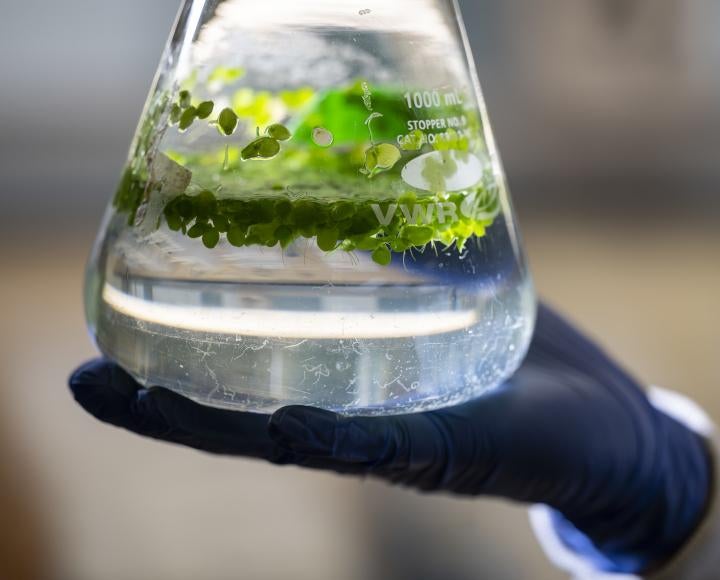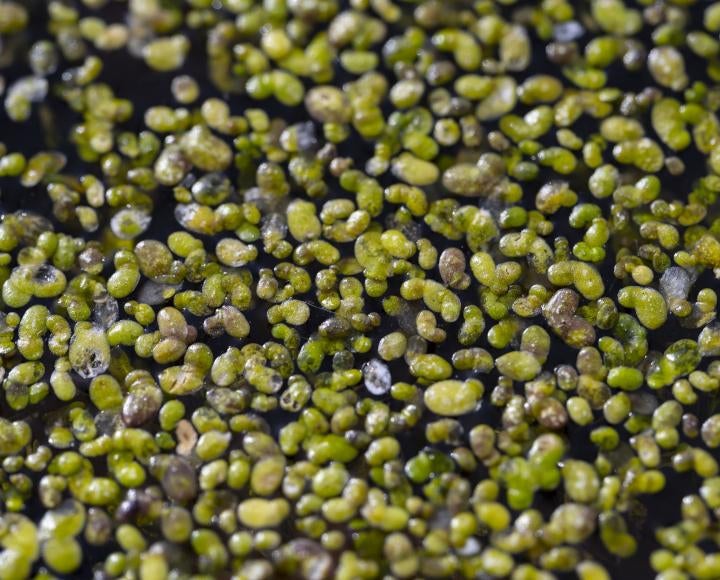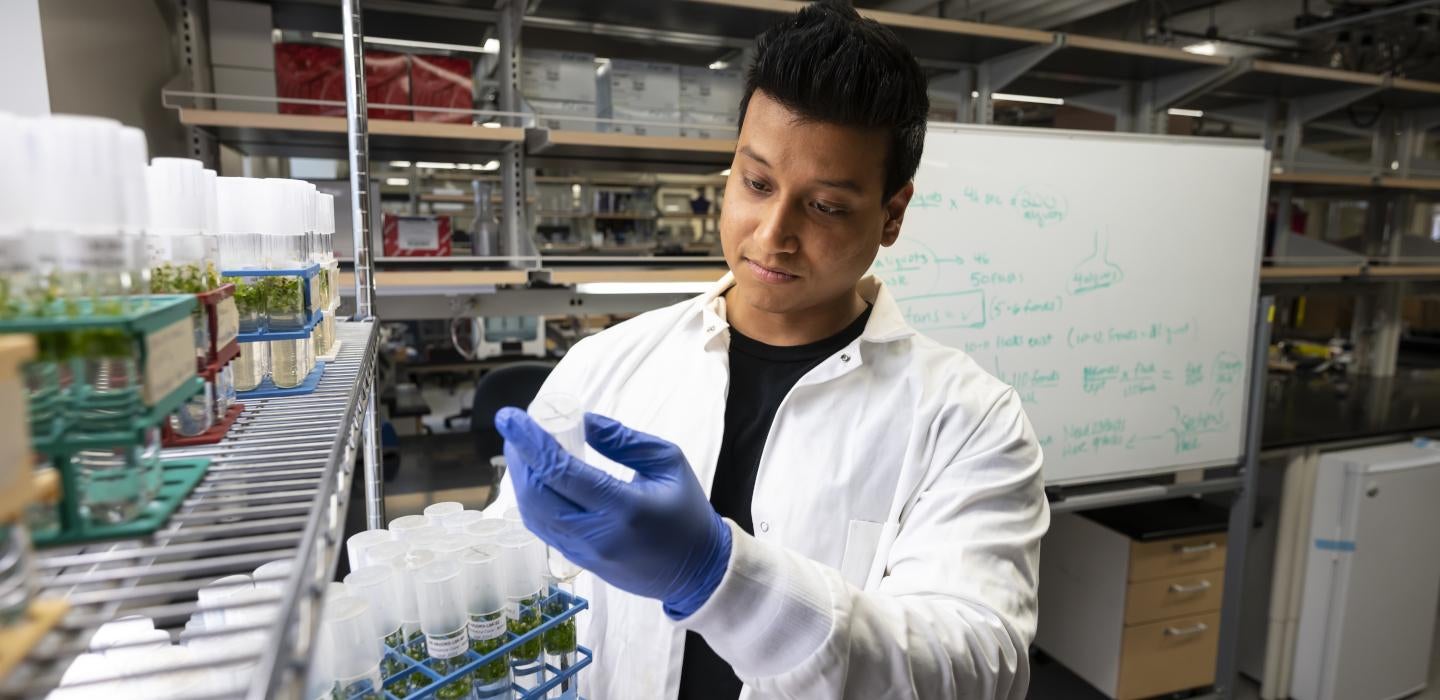
Subscribe to Pittwire Today
Get the most interesting and important stories from the University of Pittsburgh.Two heads are better than one. So how about several hundred?
Biologists in Pitt’s Kenneth P. Dietrich School of Arts and Sciences — with the help of 836 undergraduates — recently published a paper showing how doubling their genome can help plants survive in harsh environments.
“No one had done anything at this scale in this field,” said Martin Turcotte, assistant professor of biology and lead author of the paper. “It was a ton of work, and really a collaborative effort.”
That collaboration started in 2018, when instructors in the Department of Biological Sciences were tasked with making introductory lab courses into authentic research experiences. Turcotte, who uses the tiny and fast-growing pond plant duckweed to study how organisms evolve, saw an opportunity to incorporate his lab research into the curriculum. Thus began the Duckweed Survivor course.
What started as a handful of classes has ballooned into 47 class sections, 14 instructors and hundreds of students each year. And after the spring 2023 semester, Turcotte saw he had a dataset he could immediately publish.
The team, including Department of Biological Sciences faculty members Katie Wagner, Nancy Kaufmann and Tia-Lynn Ashman along with PhD student Taylor Zallek, published their results in the journal Evolution Letters.


More genes, fewer problems
In the lab, students taking the Duckweed Survivor course exposed the plant to five different industrial pollutants common in urban areas. Half of those plants were polyploids — recipients of four entire sets of chromosomes rather than two — created by the researchers using a chemical that stops cells from dividing. They then tracked whether the different populations of the plant grew or shrank over time.
“This system allows us to create polyploids, so we don’t have to deal with the fact that if we collect wild ones, they might have millions of years of evolution that might mask the effects of polyploidy,” said Turcotte.
It’s still largely a mystery why polyploidy happens at all, Turcotte said. Such a monumentally large mutation should make it hard for an organism to find a mate that’s similar enough to have viable offspring. And yet, there are traces of the phenomenon everywhere.
“It’s not just some rare microorganism that does this — 35% of current plants are polyploid,” Turcotte said. “And it’s happened to people: There’s at least one or two whole genome duplications in our history.”
One possible explanation is that polyploidy helps organisms outcompete their less genome-blessed neighbors for resources. The team’s results support another idea, that duplicating their genome gives plants a more flexible genetic toolkit they can use to cope with stressful environments: Polyploid duckweeds in their experiment were more tolerant of most of the urban pollutants the team tested.
“Our results suggest that we will find more polyploids in urban environments in the future,” said Ashman. Along with adding to the body of evidence on genome duplications, the results could also benefit biofuel and bioremediation efforts using duckweed.
And for the hundreds of undergrads taking Duckweed Survivor course, results like these offer motivation that goes beyond just getting a good grade.
“It felt good knowing that this lab is going to do something for the environment, that something we’re working on is going to be used,” said Gyan Kanhai (pictured above), a senior majoring in biological sciences.
Duckweed Survivor was Kanhai’s first college-level lab — and it also marked his return to in-person education in spring 2021 after virtual disruptions caused by the COVID-19 pandemic. (His first time in the lab, he was so nervous to be performing research that he shattered a beaker.) Though the results of his lab semester didn’t make it into the current paper, they did inform the methods of future semesters of the course.
They also informed Kanhai’s choices: He went on to join the Turcotte Lab, where he’s worked as an undergraduate research assistant for two years. Duckweed Survivor, he said, gave him the confidence he needed to take the plunge into the world of research labs.
“It made me realize, OK, maybe research isn’t as scary as I think it is,” Kanhai said. “That was one of the biggest turnarounds.” He’s now working on a pilot project in the lab where he’s testing different ways of controlling fungus and bacteria that grow alongside duckweed so it can be better cultivated for experiments.
A head start on research
Kanhai’s experience is one that’s shared among many Duckweed Survivor students, according to Wagner, who along with Kaufman spearheaded the course curriculum.
“That’s one of the major goals of these labs, to get students identifying as researchers and to retain them in the STEM fields,” she said. “It gets some students out of their comfort zones.”
Whereas a typical lab course would normally have clear-cut results, students in the department’s authentic research courses often find themselves confronting the fact that scientific research doesn’t always deliver results that are expected or easy to interpret.
Each semester of Duckweed Survivor iterates on the last, offering students experience in experimental design, troubleshooting and critical thinking, and Turcotte presents the results of each semester’s research back to the students. This and the other authentic research labs have received a strong positive response from students, Wagner said, and interest in the major has increased in the years since they started.
“All the work that we put into it, on the publication side as well as on the student side, is really worth it,” she said.
— Patrick Monahan, photography by Aimee Obidzinski


